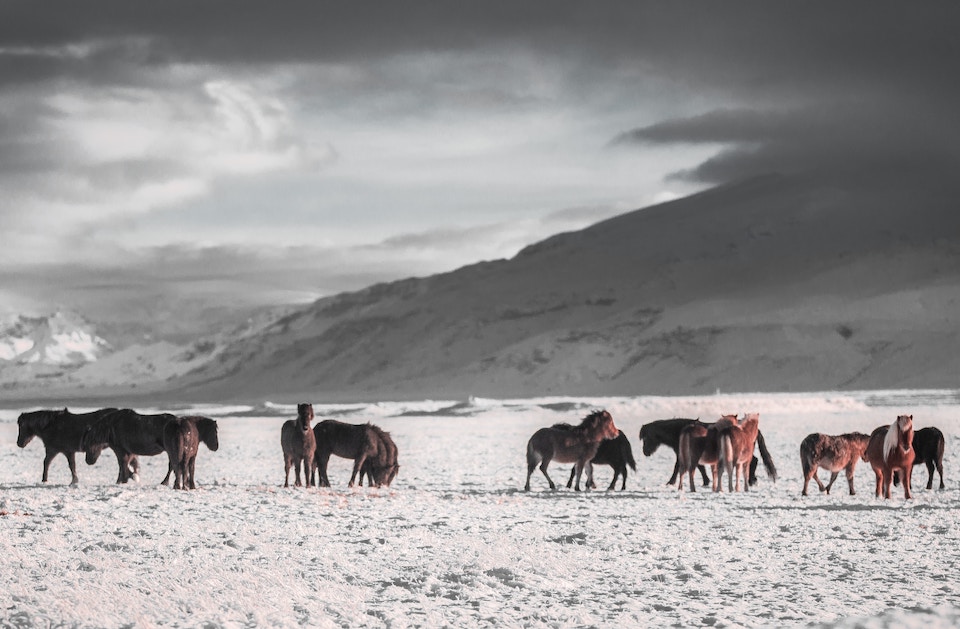Lawmakers in Congress have a duty to examine the details of a dangerous proposal – hatched by the ASPCA, Humane Society of the U.S. and two agribusiness groups – to depopulate wild horses and burros from our public lands in the West. While we’re all drawn to the idea of compromise between groups that have long been at odds – including the ASPCA and the National Cattlemen’s Beef Association (NCBA) – there’s a “trust but verify” approach. By taking a quick review of the plan, it’s inescapable that there’s something badly amiss in this gambit if you care about horses.
Despite its animal-friendly branding, the HSUS and ASPCA proposal are, in a sense, asking taxpayers to finance inhumane mass roundups of 130,000 or more wild horses and burros over a decade – adding tens of thousands of horses to the captive population that BLM manages at great expense. The goal is to remove horses until the Bureau of Land Management (BLM) reaches its favored number of 27,000 – the number that existed in 1971 when Congress passed a law to protect these animals because they were “fast disappearing from the American scene.”
Saturday, I spent the day in front of the U.S. Capitol with advocates from California, Florida, Massachusetts, and Virginia who traveled to Washington, D.C. to call out the troubling parts of the proposal. We started our rally there, and traveled by motorcade to Richmond, Virginia – approximately 100 miles. That’s the same distance as lining up all 130,000 horses, head to tail, that the HSUS and ASPCA are proposing to round up and remove from our federal lands.
Appropriations language pushed by the plan’s proponents contains no requirement for BLM to use immunocontraceptive vaccines, such as PZP.
The animal protection groups backing the measure have reversed a long-standing position that helicopter roundups pose unnecessary risks to the animals. Pilots run the horses at full speed over long, rugged terrain and try to exhaust them and drive them into corrals. It’s a terrifying experience, with horses injured at full gallop, separated from their family members, and severely stressed.
With 50,000 horses already in holding and rising costs, pro-slaughter lawmakers have already used the cost of caring for these animals as justification for the need to slaughter them. Doubling and tripling the number of captive horses will give them more fodder for their long-held ambitions. While the plan’s proponents claim that anti-slaughter provisions are included in its legislative language, that would have been achieved in FY2020 regardless of the “compromise” plan. The more important question is what happens after 5 years when there are 100,000 or more horses in holding, and Congress no longer wants to pay to care for them?
If the “compromise” were to deliver anything valuable for horses, it would at least include a provision, and the follow-up action, to get the NCBA and the Farm Bureau to back the Safeguard American Exports (SAFE) Act. They are the main groups standing in the way, and their continued opposition contradicts their claim that they want to help horses. With this plan, the NCBA gets the best of both worlds: it gets government-funded depopulation of wild horses and burros on lands its members want to graze cattle upon, and it doesn’t have to lift a finger to bar horse slaughter in FY2021 or beyond.
Giving tens of millions to the current BLM leadership in FY2020 is folly. BLM’s acting director called the wild horses the greatest “existential threat” facing public lands and said removal of the horses would ultimately cost the taxpayer $5 billion. Yet horses only occupy a small percentage of land, and livestock outnumbers the mustangs and burros by 37 to one. Is this who we’re trusting with this money and hoping he’ll do the right thing?
Instead of this foolhardy plan, Congress should direct BLM to implement the PZP contraceptive vaccine across the range of the free-roaming horses and burros A dose is administered yearly at $30 and becomes self-boosting after 5-7 years. In comparison, warehousing costs around $1,600 per year. Several herds in the U.S. are currently managed very successfully with this vaccine, and BLM should expand its use.
A special thanks to Cheryl Turner, Linda Greaves, James Goulden, Jennifer Putnam, Diane Obrien, and all who participated in the rally, the motorcade, and spent the day making the haul to Richmond – I am grateful, and so are the horses.
Rather than support mass round-ups and depopulation, our lawmakers should side with our iconic American wild horses – and the American taxpayer – and demand that BLM start to implement fertility control on a major scale. With the appropriations process in a confused state, we will have a chance to prevail. But we need you to raise your voice. Contact your lawmakers. Please contribute to help save our iconic American wild horses today by clicking here.
Marty Irby is the executive director of Animal Wellness Action in Washington, D.C., lifelong horseman, and former eight-time World Champion equestrian rider.
